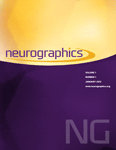
Pearls and Pitfalls of DaT-SPECT Imaging in Neurodegenerative Disorders: What the Radiologists and Clinicians Need to Know
With the growing population of the elderly in the United States, the incidence and prevalence of neurodegenerative movement disorders is increasing. Because most of the conventional radiologic examinations fail to detect the early stage of these processes, various clinical diagnostic
criteria have been developed to detect these conditions. Fortunately, with the recent advancement of diagnostic imaging, several new techniques have been developed that can diagnose these conditions at a much earlier stage, which allows for institution of therapy that can delay disease progression.
In this review article, we aimed to review the anatomy, pathophysiology, and imaging findings (including SPECT imaging, CT, and MR imaging) of various movement disorders (eg, Parkinson disease, progressive supranuclear palsy), and discuss respective differential diagnoses, with emphasis on
key discriminant features that allow for accurate diagnosis. In addition, we discussed pearls and pitfalls of SPECT imaging and reviewed and highlighted key points, which can help in avoiding these pitfalls.
Learning Objective: Identify normal and abnormal patterns in dopamine transporter SPECT imaging that result from various movement disorders and develop familiarity with common pitfalls that may result in false-positive examination.
Learning Objective: Identify normal and abnormal patterns in dopamine transporter SPECT imaging that result from various movement disorders and develop familiarity with common pitfalls that may result in false-positive examination.
Keywords: AD = Alzheimer disease; ADC = apparent diffusion coefficient; CT = computed tomography; DLB = dementia with Lewy bodies; DTI = diffusion tensor imaging; DWI = diffusion weighted imaging; DaT = dopamine transporter; FDG = fluorodeoxyglucose; MR = magnetic resonance; MSA = multiple system atrophy; PD = idiopathic Parkinson disease; PET = positron emission tomography; PSP = progressive supranuclear palsy; SPECT = single positron emission computed tomography; [123I]FP-CIT = [123I] N-w-fluoropropyl-2B-carbomethoxy-3B-(4-iodophenyl)nortropane; [123I]IBZM = 123I-S-(K)-N-([1-ethyl-2-pyrrolidinyl]methyl)-2-hydroxy-3-iodo-6-methoxybenzamide
Document Type: Research Article
Publication date: 01 July 2016
- Access Key
- Free content
- Partial Free content
- New content
- Open access content
- Partial Open access content
- Subscribed content
- Partial Subscribed content
- Free trial content